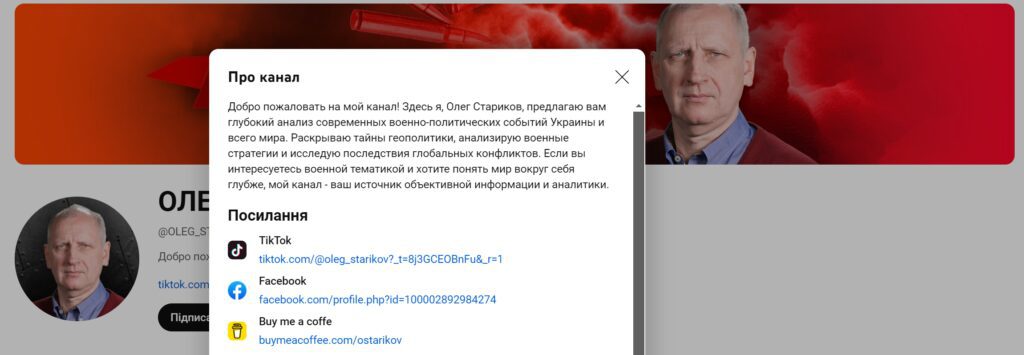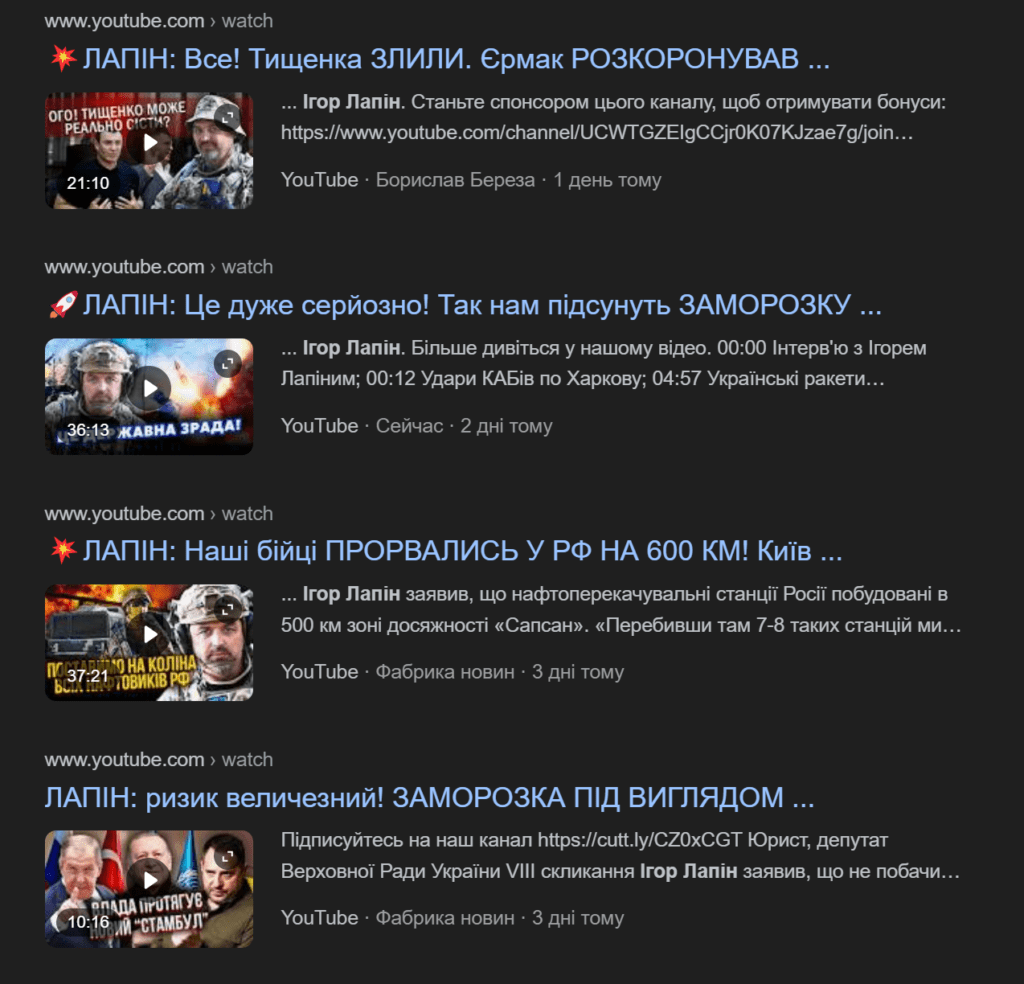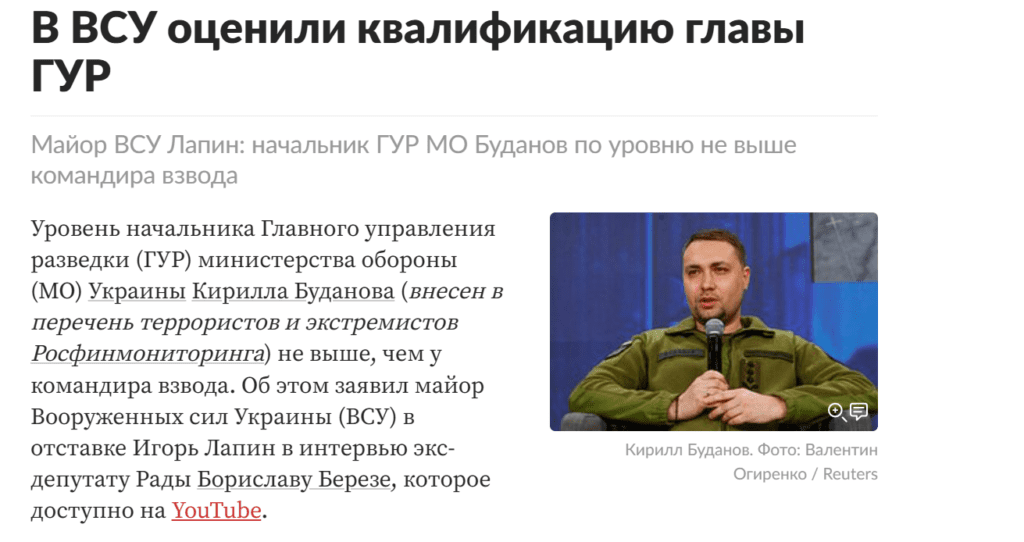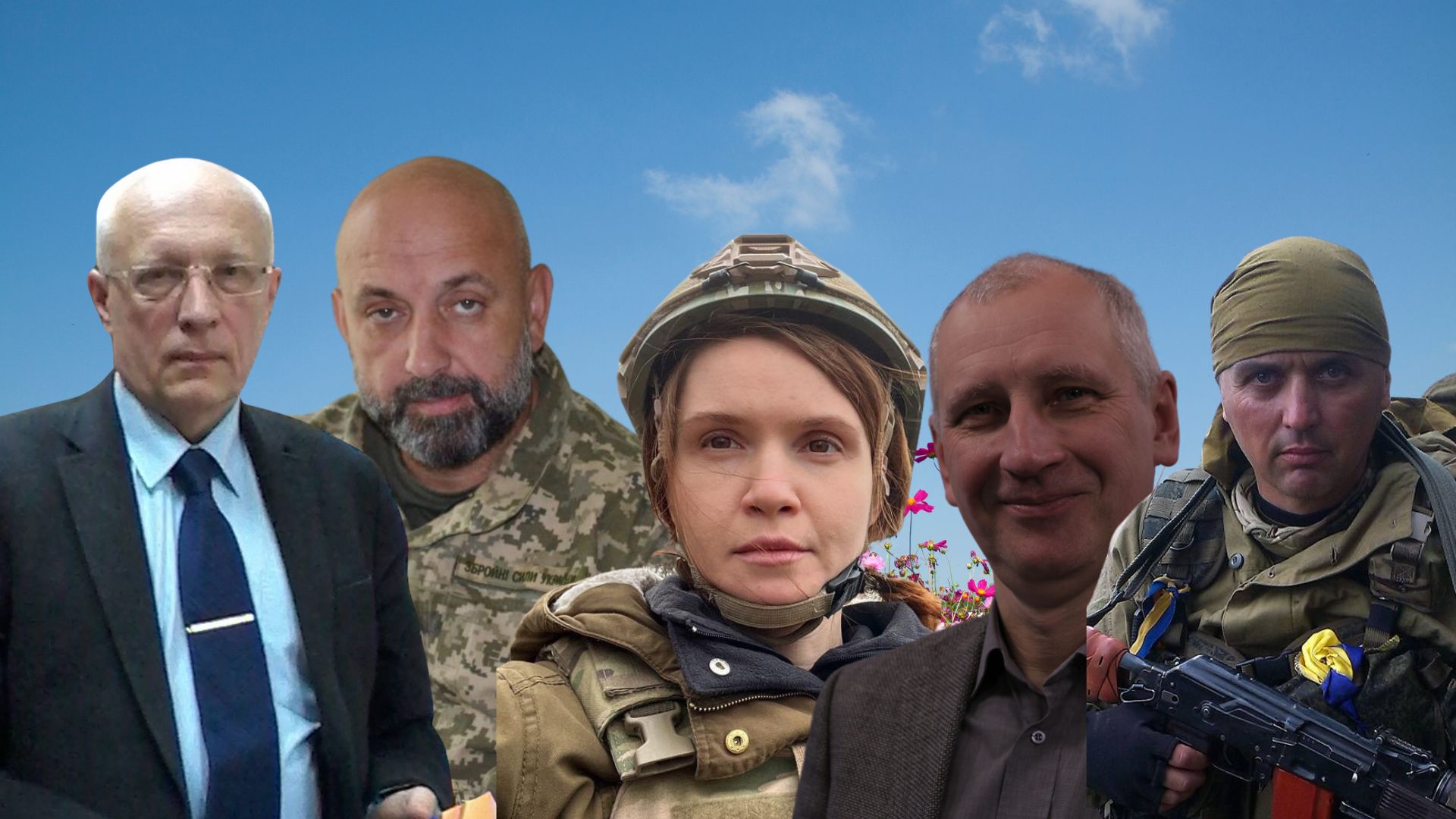The research and analysis group InfoLight.UA has published a study analyzing the top 40 Ukrainian public figures whose quotes are most often used by Russian propaganda. Between May 26 and June 25, 2024, 27,500 news items were processed on the five most visited Russian websites. Among the most quoted were Oleh Soskin, Serhiy Kryvonos, Oleh Starikov, Mariana Bezuhla , and Ihor Lapin.
Oleg Soskin is an undisputed favorite of Russian propaganda and, since he is probably not in Ukraine, we assume that he can coordinate his statements with those who disseminate them (we emphasize that we are making assumptions, not accusations – the narratives of public figures may coincide with Russian propaganda quite by accident and our statements should not be the basis for accusing us of slander).
Serhiy Kryvonos – is in the Russian news because he is a sharp critic of the current government. Oleh Starikov is the most surprising leader in this rating, as he is virtually unknown in Ukraine and makes various controversial statements, for example, about the approaching general battle of the Russian-Ukrainian war.

Mariana Bezuhla is a constant public critic of the military command. Some of this gets into the Russian media.

Ihor Lapin is a Ukrainian lawyer, member of the Verkhovna Rada of Ukraine of the VIII convocation, retired military officer. During the war in eastern Ukraine, he commanded the 2nd Assault Company “West” of the 24th Battalion of Territorial Defense “Aidar” of the Armed Forces of Ukraine, formed mainly of Volyn volunteers. He is one of the leaders of the Ukrainian YouTube segment in terms of the number and reach of videos that sharply criticize virtually everything related to the decisions of the country’s military and political leadership.

His statements often refer to the Chief of the Defence Intelligence of Ukraine Kyrylo Budanov and are used by Russia to create splits in the Ukrainian Defense Forces.

At the same time, he himself has a much lower military rank and experience to make such claims, and his military education is from the Kurgan Higher Military-Political Aviation School (KVVPAU), an officer with a higher military specialty of “social pedagogue”.
Why did we do this research?
When analyzing the Ukrainian information space, we noticed that Russian sources are often the primary source of news. Sometimes due to the laziness of news feed editors, more often – in transit through allegedly Ukrainian telegram channels. We were prompted to start the campaign by a story when virtually all Ukrainian media outlets fell victim to manipulation posted on URA.RU. We also noticed that quotes from Ukrainian public figures are often accompanied by Russian interpretations in Ukraine. And that the Russian media have their own “favorites” among Ukrainians.
That is why we have launched this research, which we will do on an ongoing basis, publishing the results every month and expanding our coverage.
Results.
Russian propaganda is quite technologically advanced. Realizing that direct fakes or references to their own sources are questionable even among their own zealots, they generate a very significant amount of news about events in Ukraine with reference to Ukrainian sources.
Of course, “Ukrainian sources” can include Sharii, Tsarev, or other fugitives, and Russian propaganda does this by presenting news in the style of “ex-Prime Minister of Ukraine said” (in the case of Azirov) or “Ukrainian political scientist said” (in the case of Vladimir Skachko).
However, it is ideal when the source of information is someone who cannot be linked to Russia in any way. Here we divided the results into three groups:
- military personnel whose critical interviews are manipulated. The most striking example is an interview with Dmytro Kukharchuk, in which he called on Ukrainian society to mobilize for war. However, certain phrases and the headline “We are losing this war now” were used in Russian propaganda.
- Representatives of state or municipal institutions, energy companies, etc. who comment on the situation primarily in the energy sector. It is clear that there is no avoiding the phrase that Russia will present as “the energy situation is approaching a catastrophe.”
- politics. This is the most interesting category. And it has undisputed “leaders” who were mentioned at the beginning.
Methodology
From these news items, we selected those where Ukrainian public figures, through their statements, speeches, social media posts, etc., became a separate newsworthy event. We did not analyze the relevant news items about the President of Ukraine, the Commander-in-Chief of the Armed Forces of Ukraine, the Chairman of the Verkhovna Rada, the Prime Minister, the Head of the Presidential Office, the Minister of Defense and other top officials. However, Mykhailo Podolyak, advisor to the Head of the Presidential Office, and a number of MPs and officials are in it.
When analyzing the news, we looked at how a particular statement by a Ukrainian public figure was used by Russian propaganda. In most cases, there is some kind of manipulation, for example, a statement about problems in the energy sector is presented with the headline “Ukraine cannot avoid permanent blackouts for the next 10 years.” Or an interview with a military officer is used for a news item with the headline “The Armed Forces of Ukraine admitted that Ukraine lost the war.” In this case, we gave one point.
Another option, much less common, was that the news was presented in a completely neutral manner. In this case, we gave it zero points. An even less common case was when the news was presented in a positive light for Ukraine. For example, there were references to the statement of the Commissioner for the State Language Taras Kremin, who insisted on ending bilingualism in Ukraine. Surprisingly, Russia has presented this in an unbiased manner in most cases.
After calculating the scores for each media outlet, we multiplied the number of points by the media influence coefficient and summed them all up.
More information is available at link.


Leave a Reply